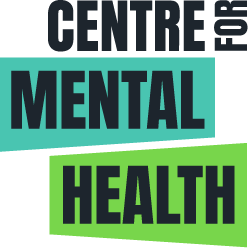Social isolation is a killer. It increases mortality risk by around a third[1] as well as being consistently linked with everything from heart disease to depression and cognitive decline[2].
Given this, it’s no surprise that programmes able to reduce isolation and connect people to a community also serve to improve health outcomes and reduce healthcare costs[3]. As Mark Hyman MD wrote; “The power of community to create health is far greater than any physician, clinic or hospital”.[4]
‘Social Prescribing’ attempts to harness that power. Put simply, it’s a process by which individuals are referred (often from primary care) to groups, clubs or services in their local community. These may range from walking groups through to sports clubs, craft sessions and advice or support services. As such, aside from reducing isolation, these referrals can also address other causes of ill-health such as physical inactivity or emotional stress.
While there is still a lack of good quality studies, evidence is emerging that social prescribing programmes can achieve significant improvements in health, mental well-being and reduced costs to the health & social care system[5].
‘Social Prescribing’… is a process by which individuals are referred (often from primary care) to groups, clubs or services in their local community.
Of course, just as a doctor’s prescription can only improve health if the patient has access to a well stocked pharmacy, so social prescribing schemes depend on a well stocked community. There needs to be a wide range of identified, local community groups and services that will offer a warm welcome to anyone referred. The process of identifying, mapping and supporting these ‘community assets’ is therefore a crucial element in social prescribing programmes.
Local authorities are well placed to make this happen. For example, in Bracknell Forest, our Public Health team have developed a “Community Map” of local groups that serves as a key resource for social prescribing. Crucially, this map wasn’t developed by simply downloading details from local voluntary service directories. Rather the team got out and explored local areas, discovering those smaller groups that were not on any official ‘list’ but still had great potential to offer support and companionship.
Our elected members have been a central part of this process. Their knowledge of what is ‘out there’, as well as their well established relationships with local communities, has been invaluable to finding local groups and getting them on board.
Just as a doctor’s prescription can only improve health if the patient has access to a well stocked pharmacy, so social prescribing schemes depend on a well stocked community
Of course, the work doesn’t stop with simply mapping community groups. We have also sought to build an ongoing relationship with those groups through our “Community Development Offer”. This comprises support on a range of issues, with the most popular being help with promotion, in the form of local press releases, videos, social media and ‘showcasing’ events. By doing this, we have not only supported existing community groups, but also managed to inspire the emergence of new groups that are now flourishing and offering a warm welcome to our residents.
Social prescribing has transformed the way we work. What started as a simple mapping project has now snowballed into an ongoing collaboration with our residents on a wide range of initiatives. It has enabled our health and social care colleagues to take a more holistic approach, while for our team, it has really put the ‘public’ back into ‘public health’ work.
[1] Holt-Lunstad, Smith, Baker, Harris, Stephenson (2015) “Loneliness and Social Isolation as Risk Factors for Mortality – A Meta-Analytic Review” Perspectives on Psychological Science https://journals.sagepub.com/doi/abs/10.1177/1745691614568352
[2] Adnan Bashir Bhatti & Anwar ul Haq. (2017)The Pathophysiology of Perceived Social Isolation: Effects on Health and Mortality. Cureus. 2017 Jan; 9(1) https://www.ncbi.nlm.nih.gov/pmc/articles/PMC5367921/
[3] Pitkala, Routasalo, Kautiainen, Tilvis (2009). Effects of psychosocial group rehabilitation on health, use of health care services, and mortality of older persons suffering from loneliness: a randomized, controlled trial. J Gerontol A Biol Sci Med Sci. https://www.ncbi.nlm.nih.gov/pubmed/19223606
[4] Hyman (2012) How Social Networks Control Your Health https://www.huffingtonpost.com/dr-mark-hyman/community-health_b_1271880.html
[5] Kings Fund (2017) What is Social Prescribing? https://www.kingsfund.org.uk/topics/primary-and-community-care/social-prescribing


